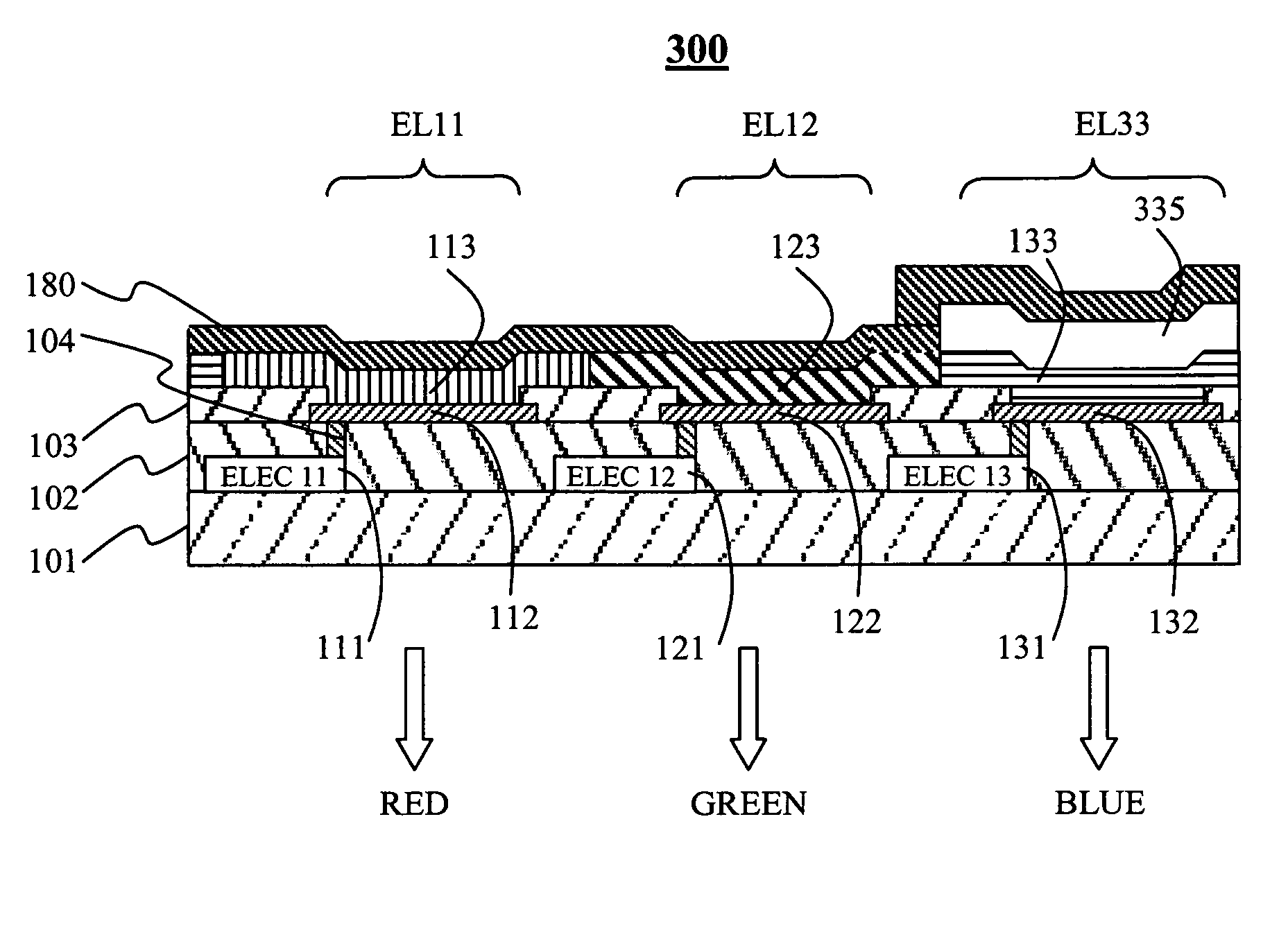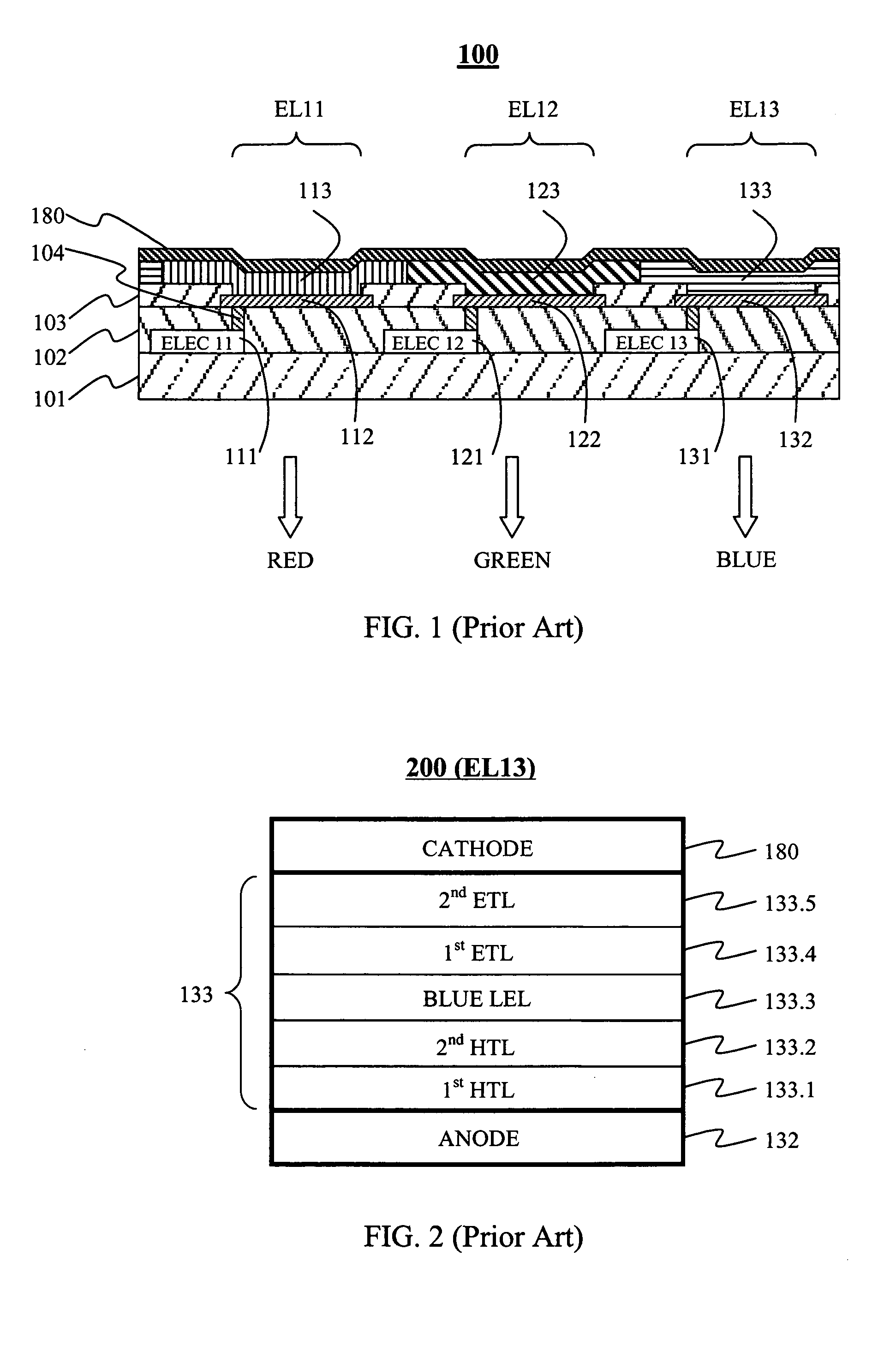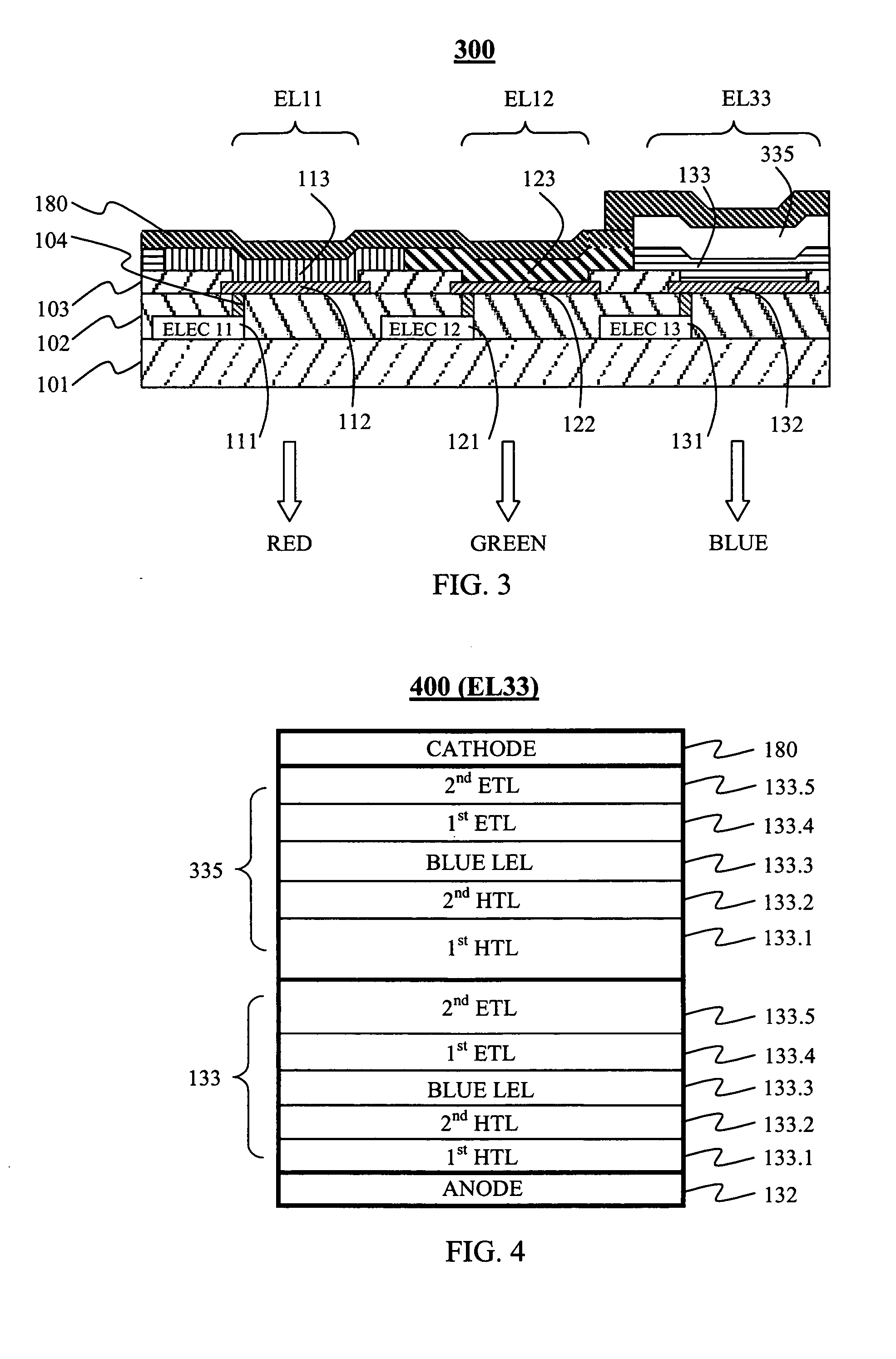Full-color organic display having improved blue emission
a full-color organic display and blue emission technology, applied in the field of improving the performance can solve the problems of limited life of full-color organic displays, achieve the effects of increasing the luminous efficiency of the display, reducing the surface emitting area, and increasing the lifetim
- Summary
- Abstract
- Description
- Claims
- Application Information
AI Technical Summary
Benefits of technology
Problems solved by technology
Method used
Image
Examples
example 1
Comparative
[0124] The preparation of a conventional blue EL subpixel is as follows: A ˜1.1 mm thick glass substrate coated with a transparent ITO conductive layer was cleaned and dried using a commercial glass scrubber tool. The thickness of ITO is about 42 nm and the sheet resistance of the ITO is about 68 Ω / square. The ITO surface was subsequently treated with oxidative plasma to condition the surface as an anode. A layer of CFx, 1 nm thick, was deposited on the clean ITO surface as the HIL by decomposing CHF3 gas in an RF plasma treatment chamber. The substrate was then transferred into a vacuum deposition chamber (TROVATO MFG. INC) for deposition of all other layers on top of the substrate. The following layers were deposited in the following sequence by evaporation from a heated boat under a vacuum of approximately 10−6 Torr: [0125] 1. EL unit: [0126] (1) a first HTL, about 70 nm thick, consisting of m-TDATA doped with 3.0 vol. % F4-TCNQ; [0127] (2) a second HTL, 10 nm thick, ...
example 2
[0133] A blue EL subpixel was constructed in the manner described in Example 1, and the deposited layer structure is: [0134] 1. 1st EL unit: [0135] (1) a first HTL, about 70 nm thick, consisting of m-TDATA doped with 3.0 vol. % F4-TCNQ; [0136] (2) a second HTL, 10 nm thick, consisting of NPB; [0137] (3) a LEL, 20 nm thick, consisting of TBADN doped with 1.5 vol. % TBP; [0138] (4) a first ETL, 10 nm thick, consisting of Bphen; and [0139] (5) a second ETL, 25 nm thick, consisting of Bphen doped with 1.2 vol. % Li. [0140] 2. 2nd EL unit: [0141] (1) a first HTL, about 55 nm thick, consisting of m-TDATA doped with 3.0 vol. % F4-TCNQ; [0142] (2) a second HTL, 10 nm thick, consisting of NPB; [0143] (3) a LEL, 20 nm thick, consisting of TBADN doped with 1.5 vol. % TBP; [0144] (4) a first ETL, 10 nm thick, consisting of Bphen; and [0145] (5) a second ETL, 25 nm thick, consisting of Bphen doped with 1.2 vol. % Li. [0146] 3. Cathode: approximately 330 nm thick, consisting of MgAg.
[0147] The E...
PUM
 Login to View More
Login to View More Abstract
Description
Claims
Application Information
 Login to View More
Login to View More - R&D
- Intellectual Property
- Life Sciences
- Materials
- Tech Scout
- Unparalleled Data Quality
- Higher Quality Content
- 60% Fewer Hallucinations
Browse by: Latest US Patents, China's latest patents, Technical Efficacy Thesaurus, Application Domain, Technology Topic, Popular Technical Reports.
© 2025 PatSnap. All rights reserved.Legal|Privacy policy|Modern Slavery Act Transparency Statement|Sitemap|About US| Contact US: help@patsnap.com



